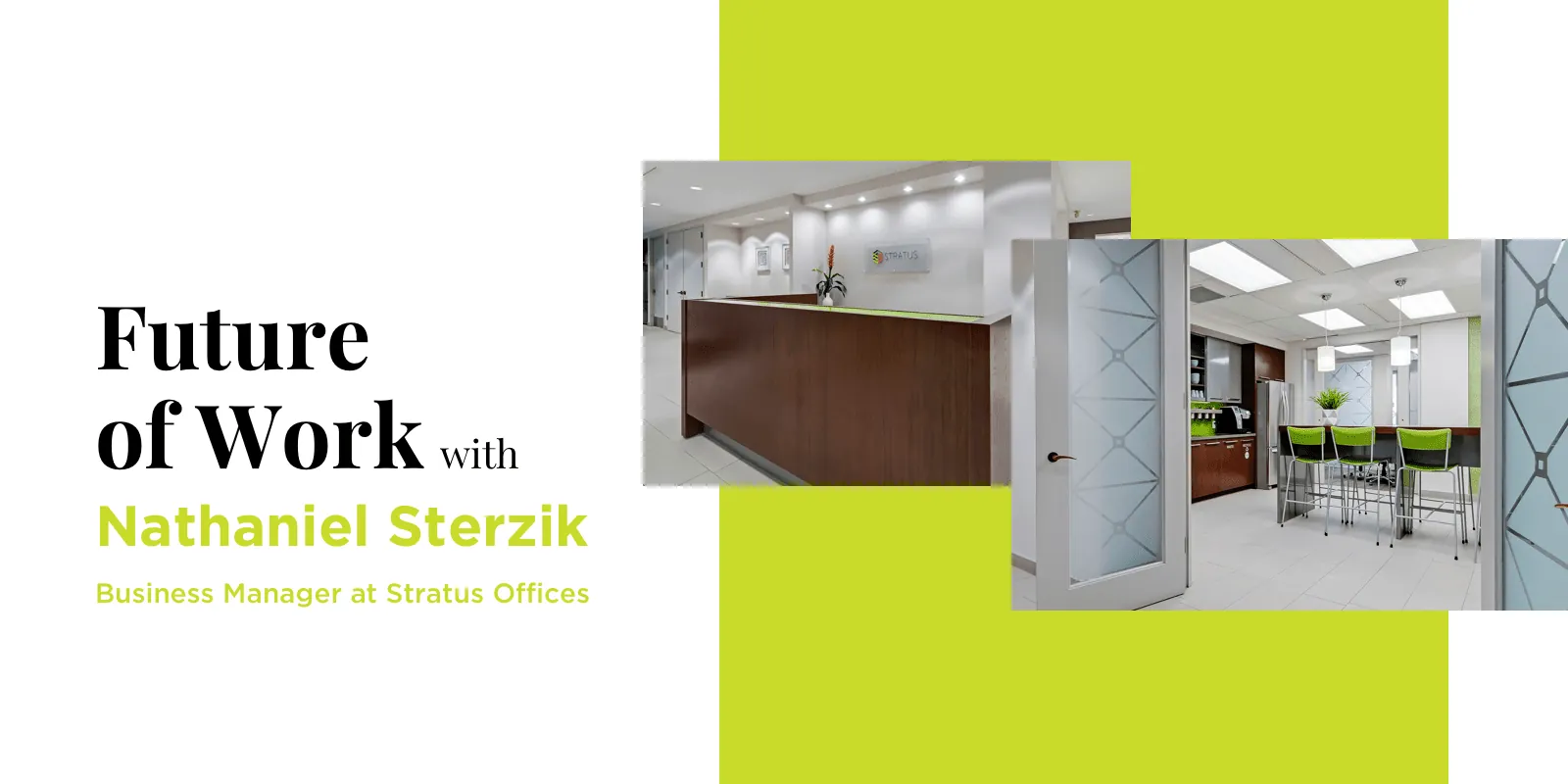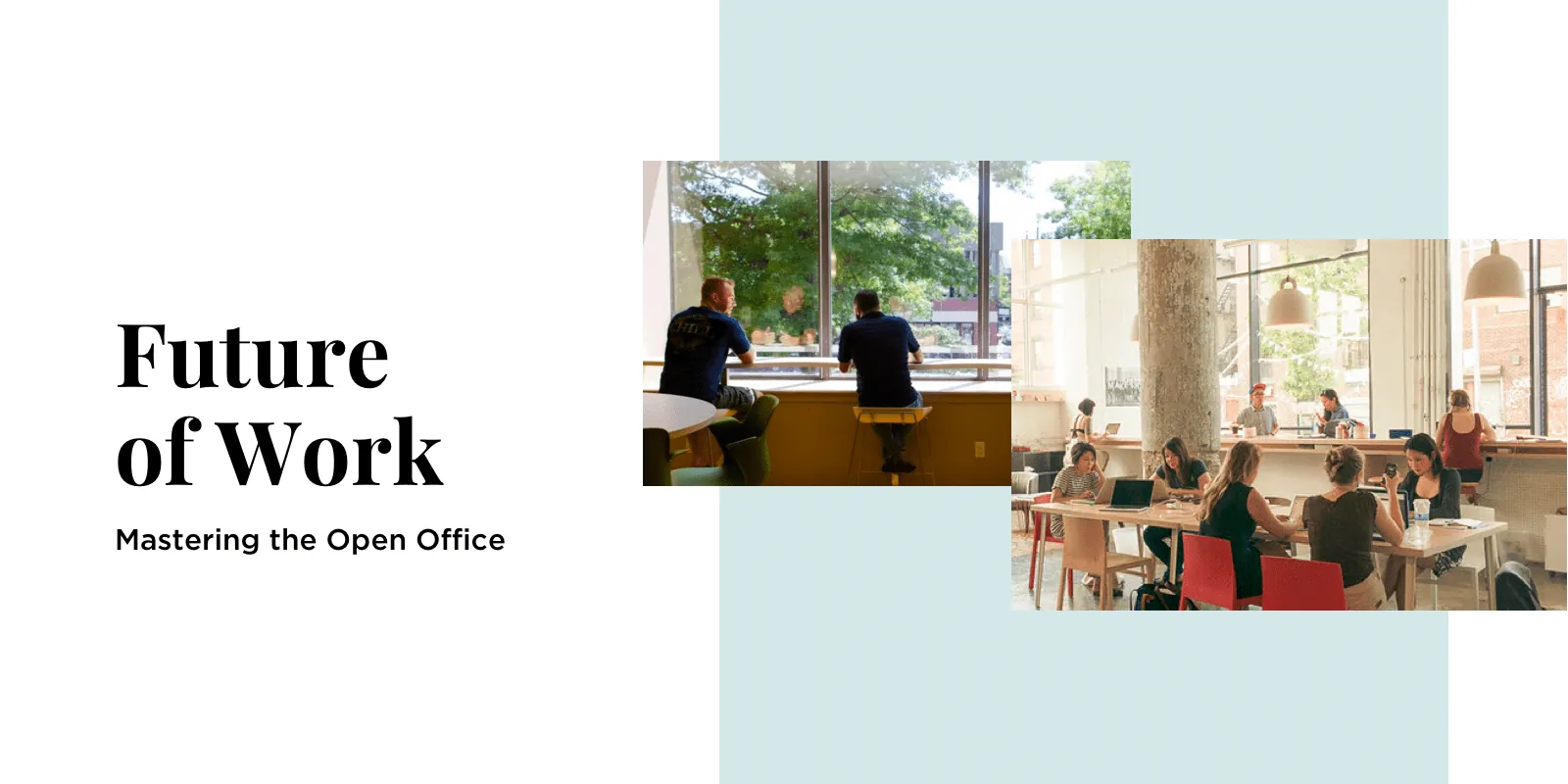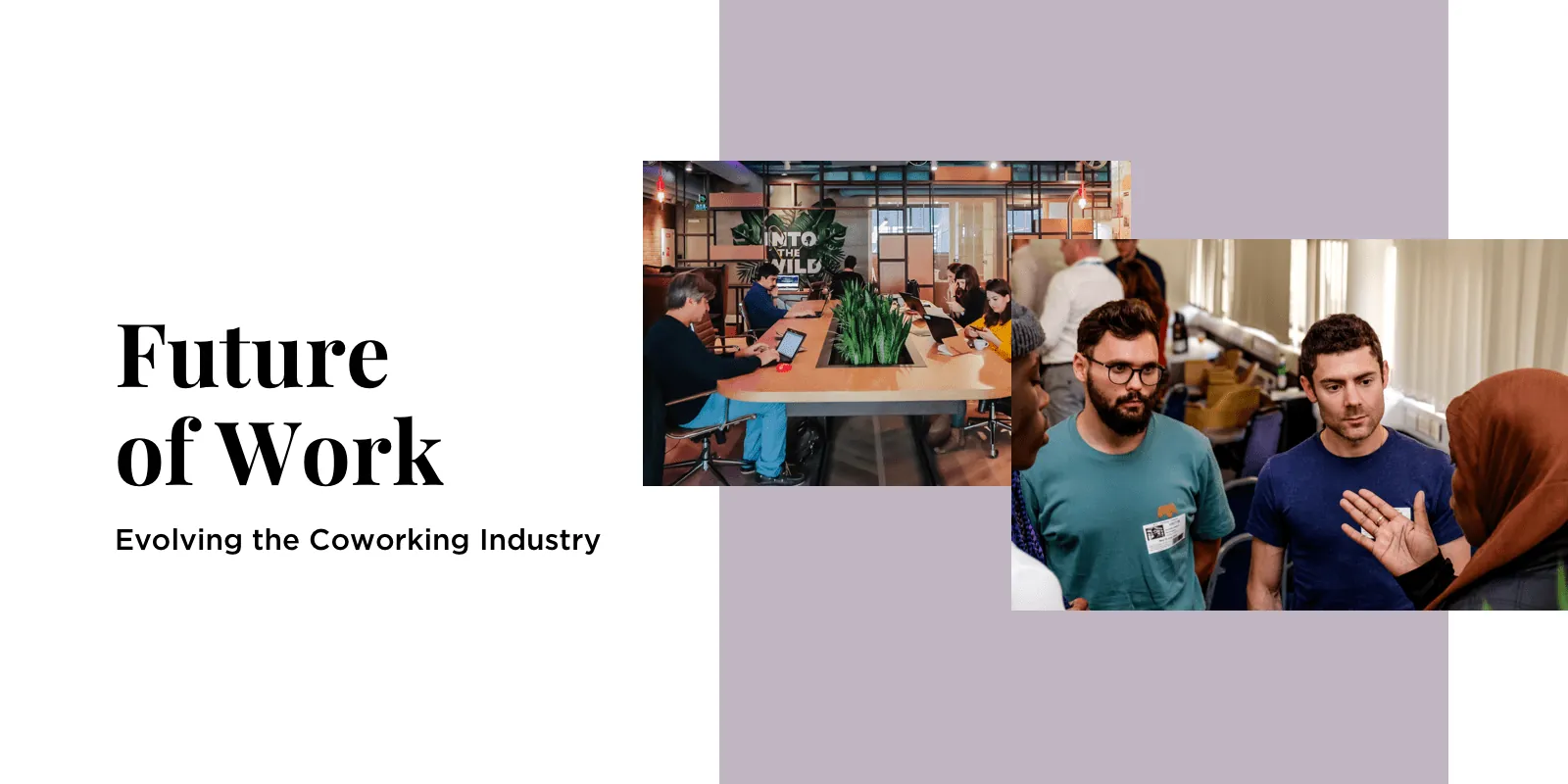
Five years ago, very few people knew about coworking. Originally a niche movement of independently-owned spaces, the coworking sector has now grown into a full-fledged global industry, with the estimated number of coworking spaces at 17,000+ today. As large-scale coworking chains enter the market, it’s now increasingly crucial that your coworking space learns to evolve and adapt its offering to succeed in this growing industry.
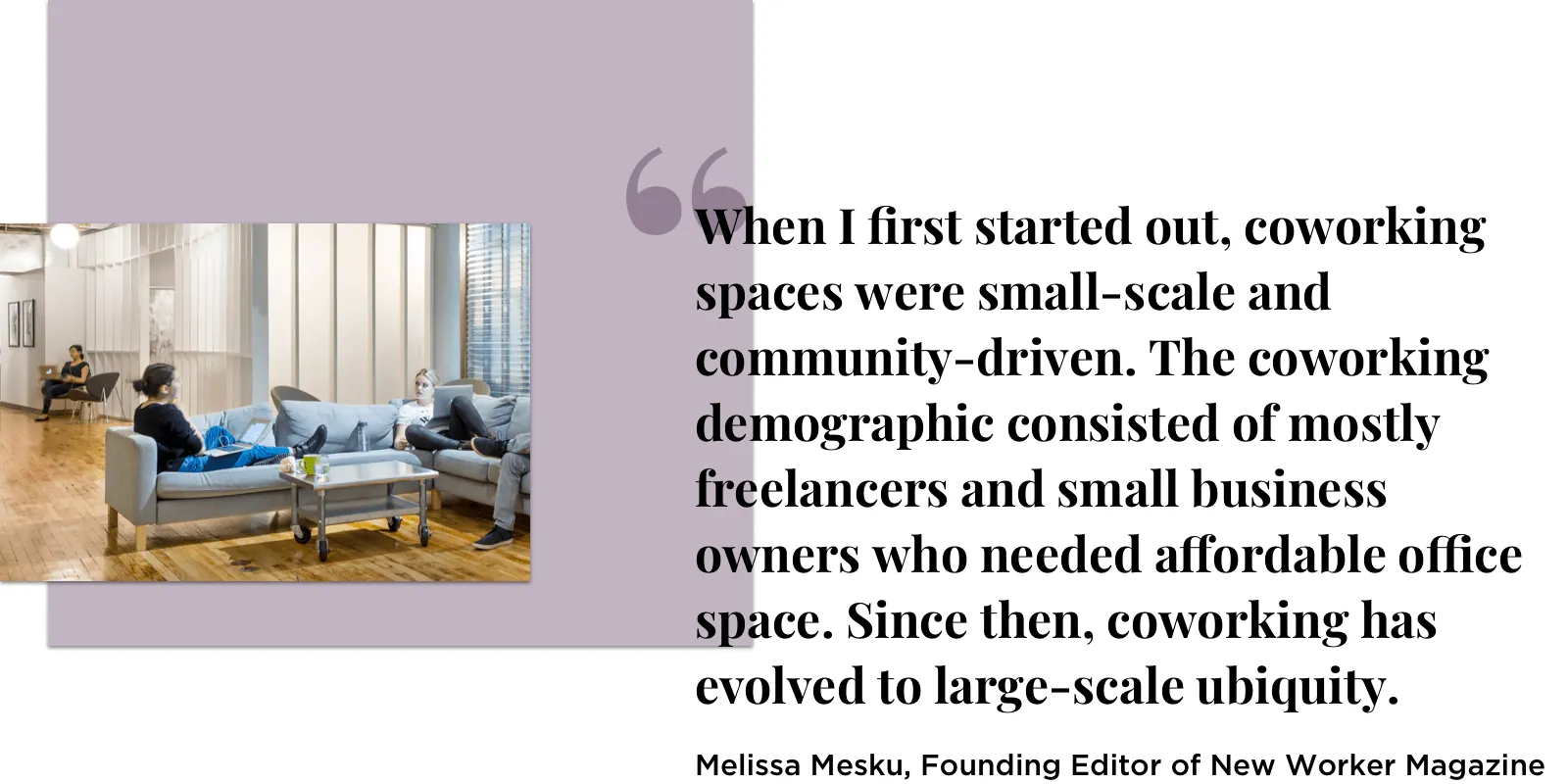
No time to dive all the way in? Here are three quick insights you can take away:
- Tap the Enterprise market: Blue-chip companies are starting to recognize the value of coworking. By reaching out to their HR teams, you can build relationships and optimize your space to attract this lucrative, new audience.
- Discard competition: Competition isn’t the only way forward. Collaborating with other coworking operators lets you pool insights, lobby governments for improved legislation, and fund larger-scale advertising campaigns that help everyone grow.
- Become more than a coworking space: Offering a place to work is no longer enough. If you want to gain and retain members today, you need to pinpoint services that will make you indispensable, like 24-hour access, childcare, and fitness facilities.
The evolving coworking member
The coworking industry isn’t the only one that’s changing. Its members are too. An early adopter and advocate for coworking, Melissa Mesku has been watching this shift with interest.
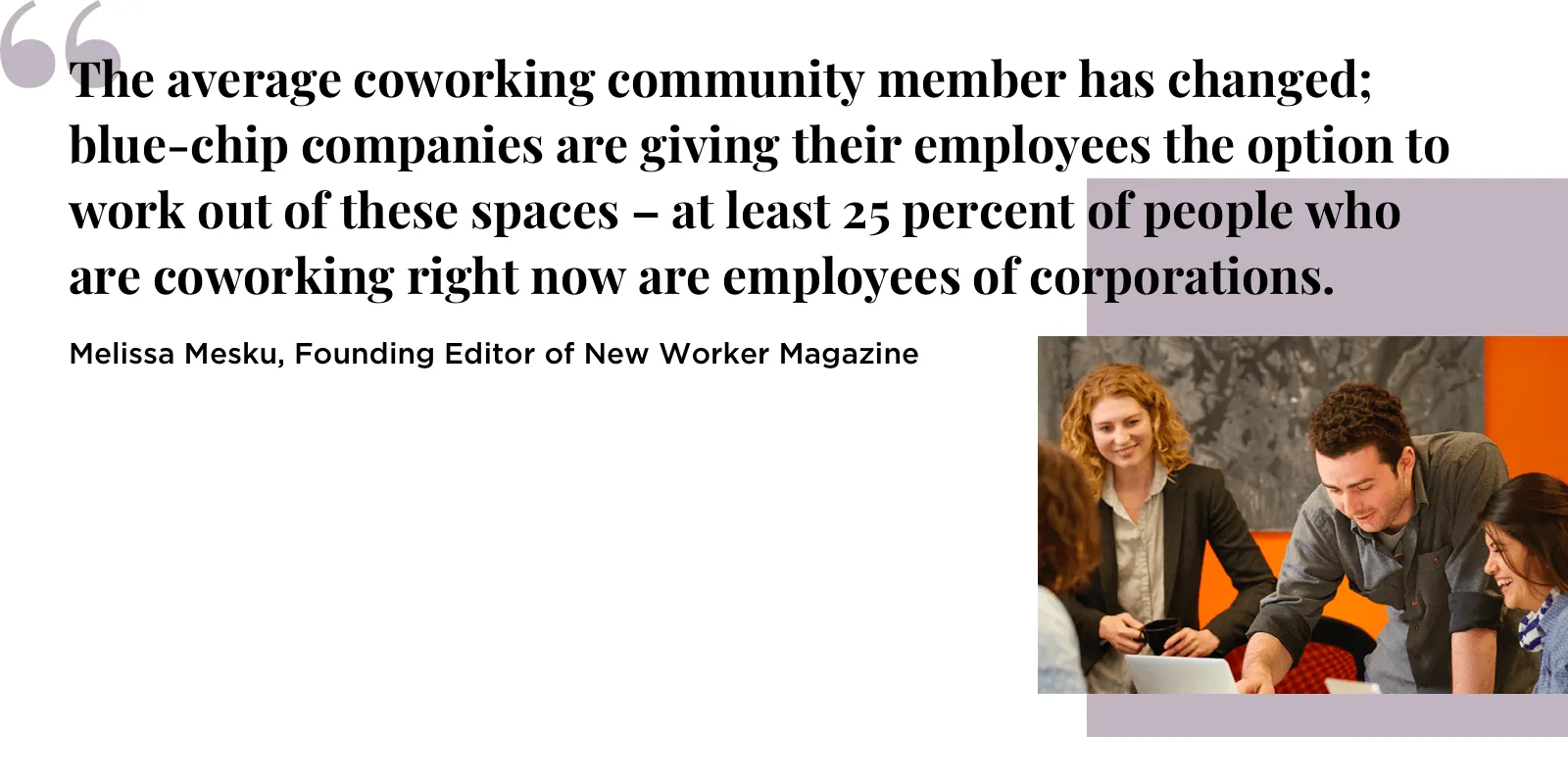
This presents an opportunity to access a new type of customer. Instead of targeting individuals and startups, you can bring in the entire workforce of established organizations. The key, according to Melissa, is to proactively approach the HR personnel of these companies and learn about the needs of their employees. That way, not only do you build relationships, you also discover how to optimize your space to accommodate and attract these enterprise clients.
Yet, just because the industry and its members are changing, it doesn’t mean the essence of coworking needs to. Melissa believes it’s possible to marry the community culture of old-school coworking with today’s mainstream model. To do this, you need to focus on a niche – be it an industry or common interest. In the process, you ensure camaraderie between members, while still allowing your space to adapt and expand.
Collaboration over competition
Year-over-year, the demand for coworking grows. In 2016, the average space had just under 50 members. Today, that’s gone up to 82, an increase of 67%. With a rising number of venues popping up to meet this demand, it would be easy to fall into a competitive mindset. Rachel Young, founding member of CoworkingToronto, believes in doing the exact opposite.
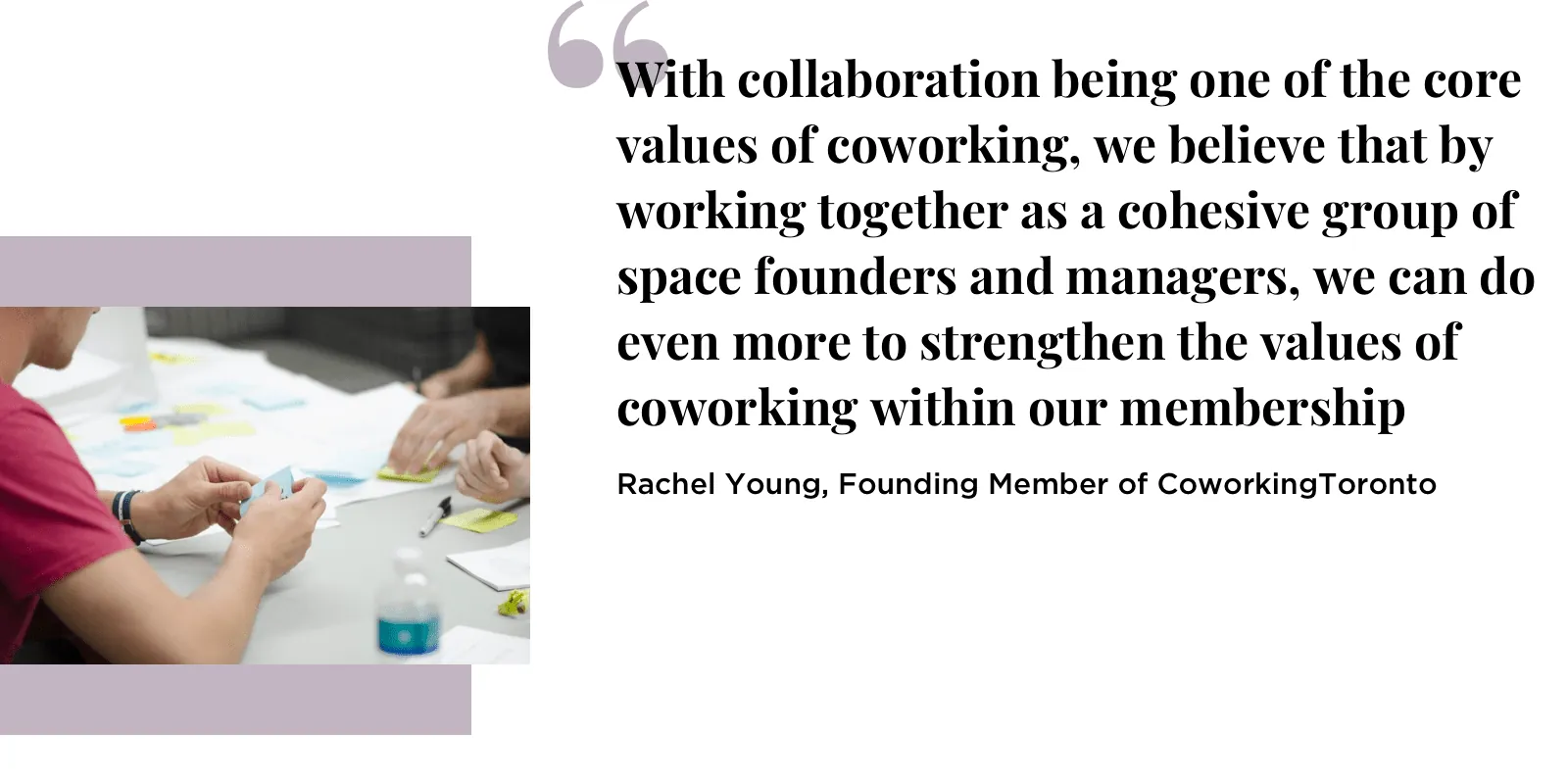
By discarding competition in favor of collaboration, you can pool insights that allow the coworking community as a whole to better attract and retain members. With a unified voice, you can lobby government to improve tenancy legislation. What’s more, working collectively opens the door to large-scale cooperative marketing and advertising opportunities you may find difficult to afford alone. As a result, your reach is expanded to untapped markets, introducing your venue and the benefits of coworking to a far wider audience.
Give the people what they need
One surefire way to ensure your coworking space succeeds in today’s evolving industry is to never stop adding value. This is a principle that has stood Ed Fidoe in good stead. Founder of an education coworking space in London, he offers services far beyond a desk. Among other things his members get access to startup loans, business support, and mentoring.

In his eyes, coworking spaces need to become more than a place to work if they want to thrive. To do this, you have to ask your members what they need and pinpoint the services that would make their lives easier. This could be 24-hour access to the space, a concierge service or, as Melissa Mesku suggests, facilities that help ensure work-life balance, such as child care and fitness classes. In the process, you weave your space into your members’ lives, becoming an irreplaceable resource.
The bottom line is that the growth of the coworking industry shows no signs of slowing. More and more spaces are now entering the market, particularly large-scale coworking chains. To make sure your business thrives in this changing environment, it’s crucial you learn to adapt and evolve with it. Our thought leaders’ tips are a great place to start!


